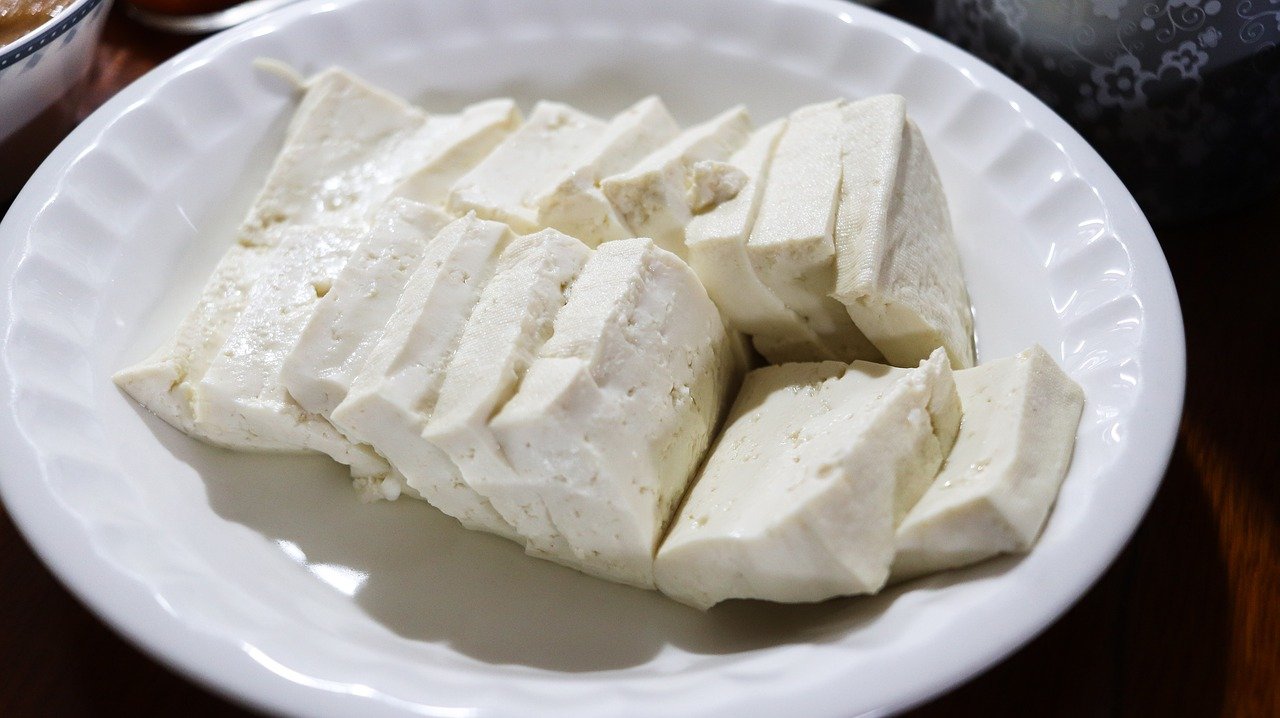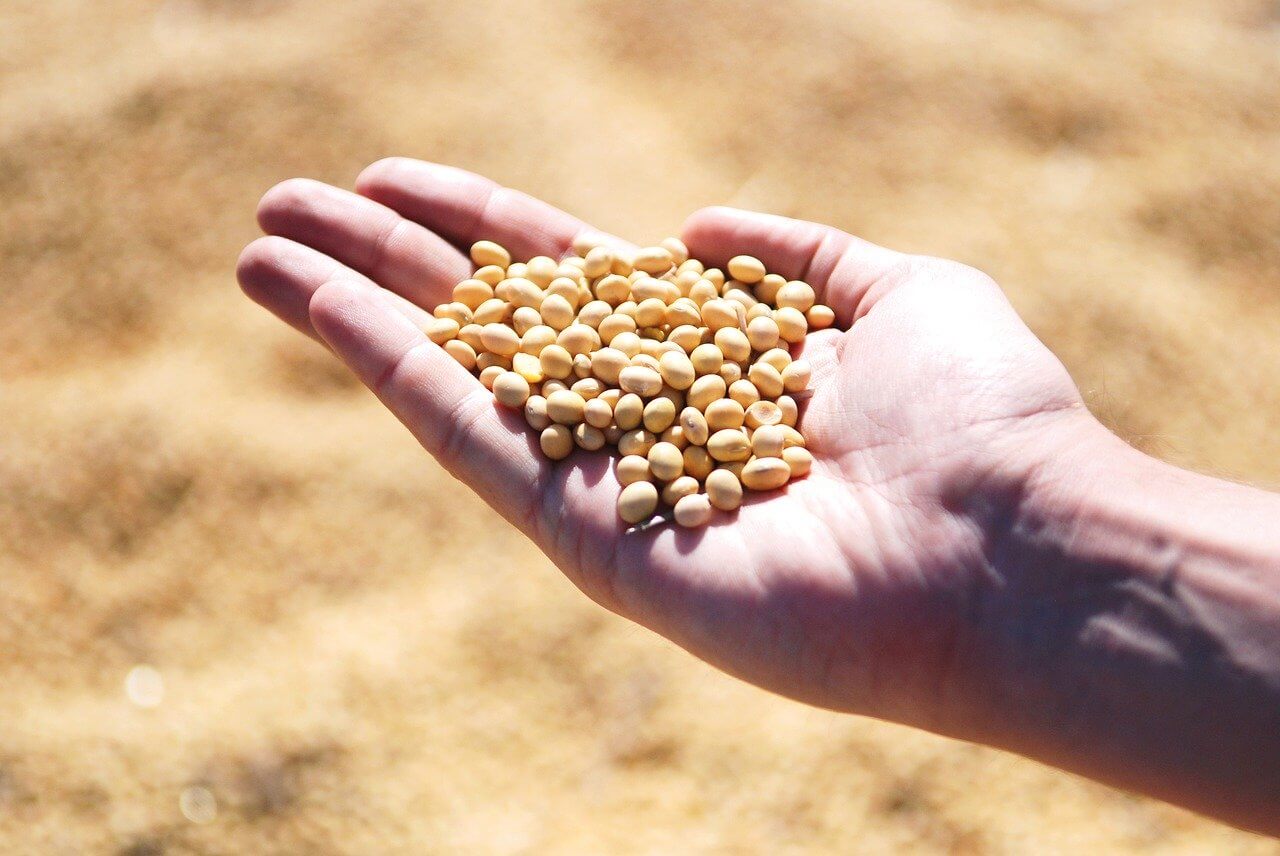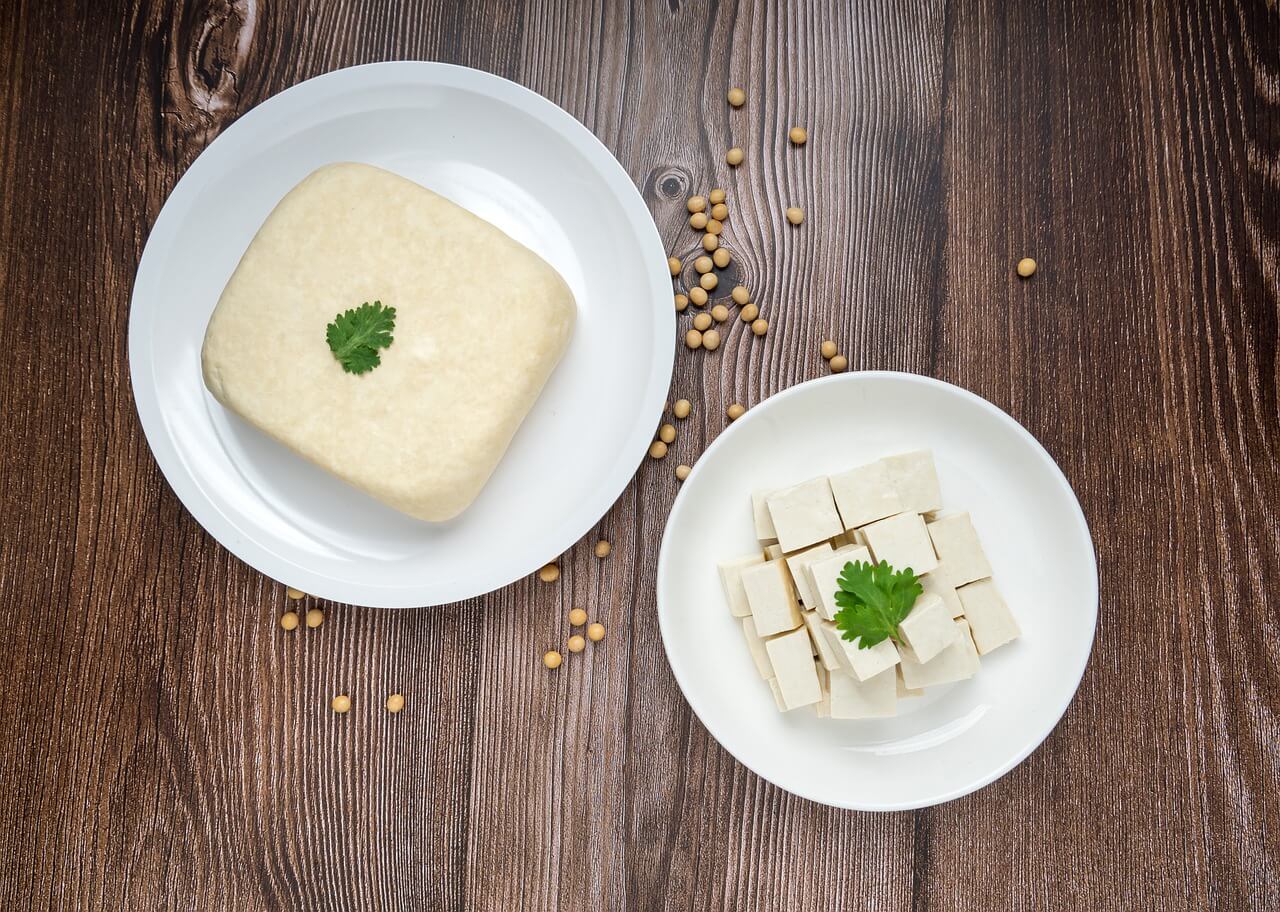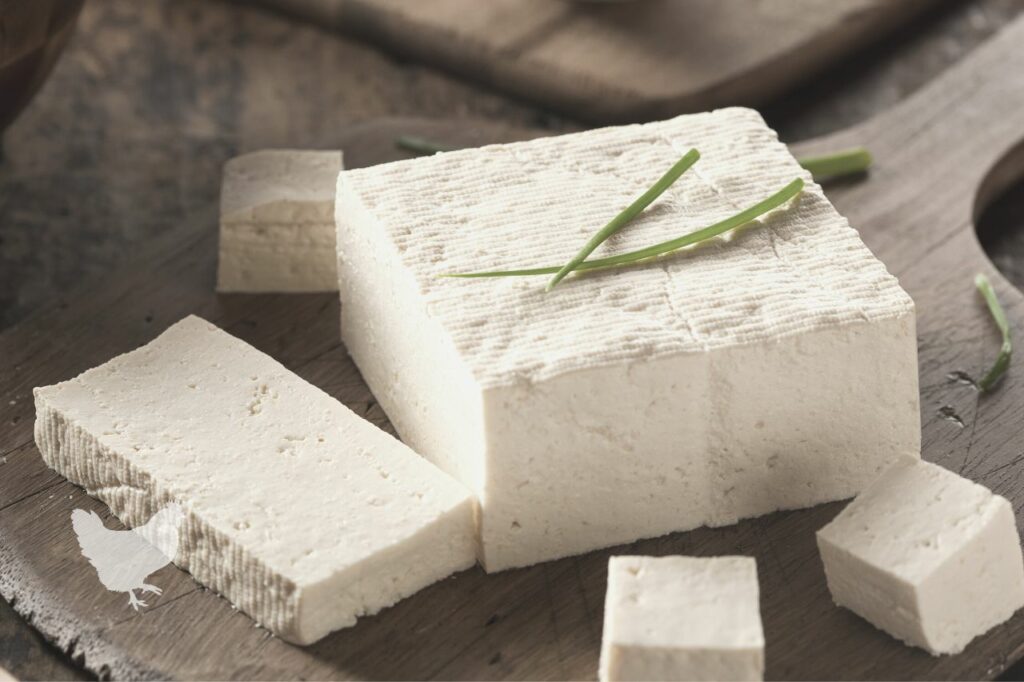Making tofu at home is fun and easy to do. It lets you add additional flavors and textures, as well as deciding how soft or firm it should be. You can buy soybeans directly from a store, or you can grow your own. In this article, we’re going to discover precisely how to make tofu from soybeans at your homestead.
What You'll Learn Today
What is Tofu?

Tofu, or “bean curd” as it is also called, was probably discovered by accident when soy milk was mixed with a coagulant.
It was found that the curdled milk solids could be pressed to make a compact shape, in a similar way to making cheese.
Because tofu is not made from animal milk, it is suitable for vegans or those with intolerances or allergies to dairy.
Tofu History
It originated in China, but the exact history is debated and cannot be proven.
The most popular theory is that it was discovered around 164 BCE during the Han Dynasty by Prince Liu An.
It is common in Chinese folklore for significant inventions to be attributed to well-known historical figures, so it is possible that tofu actually predates Liu An.
Soy milk has been eaten since ancient times, and one popular story about its discovery is that boiled ground soybeans were mixed with some impure sea salt. The salt contained traces of calcium and magnesium, which caused the milk to curdle.
Another theory is that the technique for curdling soy milk was copied from the way Mongolians curdled animal milk.
The reason for this is the similarity of the Chinese name for fermented Mongolian milk, which is Rufu (spoiled milk), and the term for tofu which is Doufu.
The knowledge that tofu was consumed widely in ancient China is irrefutable, and its popularity spread throughout Asia.
Tofu is given as a food offering at the graves of deceased relatives in China. This is said to be because it is the only food the spirits can eat as it is soft.
It is now a staple food in many countries, including Japan, Vietnam, Korea, and Thailand.
Picking your Soybeans

Soy products have become somewhat controversial in recent times. This has been significantly fueled by the fact that most US-grown soybeans are genetically modified.
It is, however, not difficult to find non-GMO soybeans for anyone not wishing to use the GMO ones.
Arguably the best soybeans can be purchased in health food shops, or you can even grow your own.
Types of Tofu
Store-bought tofu comes in a variety of choices. There’s soft, firm, extra firm, or silken.
You can even purchase flavored varieties to suit your tastes or the dishes you wish to make.
- Soft Tofu has only been gently pressed and still contains a lot of moisture. It has a creamy texture ideal for sauces, smoothies, pie fillings, or to use as an egg replacement for meatloaf or a dairy replacement for pasta dishes.
- Firm Tofu has had more moisture pressed out and tends to maintain its shape better than soft tofu. It can be pan-fried, stir-fried, or deep-fried, boiled, battered, or crusted.
- Extra-firm Tofu is excellent for slicing and dicing and using as a meat alternative in a wide variety of dishes. It makes an excellent protein source alternative.
- Silken Tofu has a soft custardy texture and is unpressed. It can be used in the same way as soft tofu and for ice cream, or to replace eggs, butter and cream.
One of the best things about making your own tofu is that you can control who soft or hard it is, making it perfect for any dish you want to create.
How to Make Tofu from Soybeans

Tofu is an excellent source of plant-based protein. It is straightforward to make, having only three ingredients, soy milk, water, and a coagulant.
Types of tofu coagulant
- Gypsum – natural calcium sulfate. Traditionally used. Has a sweeter taste.
- Epsom Salt – this is magnesium sulfate and is easy to get from your local pharmacy. It has a multitude of uses around the home.
- Lemons – specifically, lemon juice. It makes the milk curdle just as well – bringing a hint of lemon to the tofu taste.
Tools and Equipment Required
- Colander
- Large pitcher or bowl for soaking the beans
- Sieve
- Food processor or Blender
- Two large cooking pots
- Cheesecloth, muslin cloth, or nut milk bag
- A tofu mold or something to use to shape the block
- A tray to collect the liquid
- A skimmer spoon
Ingredients
- 3 cups (750 grams) dry soybeans, ideally organic GMO-free ones
- 12 cups (2.75 liters) of water (preferably filtered), plus 2 cups of extra water for blending
- 1 tbsp of gypsum powder (calcium sulfate) diluted with a drop of water
- OR 2 tbsp of Epsom Salt (magnesium sulfate) diluted with a drop of water
- OR the juice of 3 freshly squeezed sour lemons
- If you want to flavor your tofu, you can add herbs, finely chopped sun-dried tomatoes, olives, or finely grated lemon rind. Experiment a little to see what you like most. Much will depend on what you want to make with the tofu.
Directions for Making Tofu from Soybeans
1. Rinse your soybeans in a colander and remove any discolored ones.
2. Put the beans into a large pitcher or bowl and cover completely with water adding an extra pint on top.
3. Soak the soybeans overnight or for a minimum of 6 hours. During this time, they will expand to at least double their original size.
4. Strain the beans through a sieve and rinse.
5. In sensibly sized batches, place the soybeans into a high-speed food processor or blender and turn on high for 10 to 15 seconds or until the beans begin to break down slightly. Then add enough water while blending on high to achieve a smooth and creamy consistency.
6. Pour each batch once thoroughly blended into your large cooking pot.
7. Mix your coagulant (gypsum powder or Epsom salts) with a bit of water and stir well until it is a milky consistency.
8. Or juice your lemons, removing any pips.
9. Add the 12 cups of water to your cooking pot, then place it onto the stove and heat gently while stirring until it begins to boil.
10. Turn the heat down and simmer on low for 15 minutes, stirring gently. Don’t allow it to boil over. Remove any foam or skin that forms on top.
11. Turn off the heat and strain the mixture into your second cooking pot. Use the back of a spoon to press out as much liquid (soy milk) as you can. You will be left with a solid (Okara) in the sieve, set it to one side.
12. Re-heat the pan containing the soy milk just until it reaches boiling point.
13. Take the pan off the heat and add your coagulant of choice. Stir it gently a few times and then set it aside to allow the curds to start separating. This should happen in 5 to 10 minutes.
14. Using your skimming spoon, skim out your curds and pour them into a mold lined with a cheesecloth or muslin. If you don’t have a mold, use your colander as one. Ensure you place the mold on top of a dish, tray, or bowl to catch the excess liquid coming out of your curds.
15. Squeeze out excess liquid and wrap your tofu in the cheesecloth.
16. Put a small plate on top of the cheesecloth and place a heavy object on top.
17. Leave to drain for about 20 minutes. You can reduce or add to the time depending on how firm you like your tofu to be. (Check every 5 to 10 minutes.)
18. Your tofu should now be firm and is ready to use.
Here is a video that may help you:
Storing Your Tofu
To store tofu, keep it in an airtight container and refrigerate for up to 4 days. If you don’t want to use it on the day you make it, then store it wrapped in its cloth in a container that is filled with filtered cold water.
The water should be changed daily. If you don’t do this, your tofu will dry out.
Tofu can also be frozen for several months in a suitable freezer. Ensure the container you use to freeze the tofu is designed for use in a freezer.
Cooking Tofu
When you’re ready to cook your tofu, it can be used in many ways and added to all kinds of dishes.
Depending on the hardness of your tofu, you can add it to sauces or use it fried, grilled, baked, or scrambled. Simply drain it and blot with paper towels to remove excess water, and you’re good to go.
To add additional flavor, cut it into cubes and marinate in any sauce you fancy. Then put it into a skillet with a little oil and fry it off until it’s nice and crispy. You can add this to all kinds of dishes from salads to pasta to rice and more.
If you don’t know what to do with your leftover Okara, there are loads of great savory and sweet recipes to be found online.
Frequently Asked Questions

Tofu can be infused with a wide variety of flavors during the preparation process. Some common flavors include soy sauce, garlic, ginger, chili, sesame oil, miso paste, and various herbs and spices. By marinating or seasoning tofu before cooking, you can enhance its taste and add complexity to your dishes.
Genetic modification can have both positive and negative impacts on the quality of a soybean crop. It depends on the specific modifications made. On the one hand, genetic modifications can improve crop yield, pest and disease resistance, and nutritional content. On the other hand, there are concerns about the long-term effects on biodiversity, ecosystem balance, and unintended consequences.
The best container for freezing tofu is an airtight, freezer-safe, silicone or glass container. Before freezing, you should drain and press the tofu, wrap it tightly with plastic wrap or place it in a freezer bag. Once it’s securely wrapped, you can store it in the freezer container. This double process helps to prevent freezer burn and maintain the tofu’s texture and flavor.
Okara is a byproduct of soybean production and is obtained by separating the pulp from the soy milk during the tofu or soy milk-making process. It is a creamy, pulpy substance that is left behind after extracting the liquid from soybeans. Okara is rich in fiber, protein, and nutrients, so it is a valuable ingredient that can be used in many ways.
Add Okara to baked goods like bread, cookies, or muffins to increase their nutritional content and provide moisture. Okara can also be used as a meat substitute in veggie burgers or meatballs, or as an ingredient in vegetarian or vegan patties. It can be incorporated into soups, stews, or stir-fries to add texture and nutrition. Additionally, Okara can be used as a base for making tofu scramble or as a binder in vegetarian meatloaf or meat-free meatballs.
Conclusion
I hope you’ve enjoyed discovering how to make tofu from soybeans. As you’ve seen, it’s really not so difficult.
It’s a good idea to try using different coagulants, trying out different firmnesses, and adding various extra ingredients to discover your favorite homemade recipe.
If you are looking for more soybeans related tips, here is our guide about extracting oil from them.